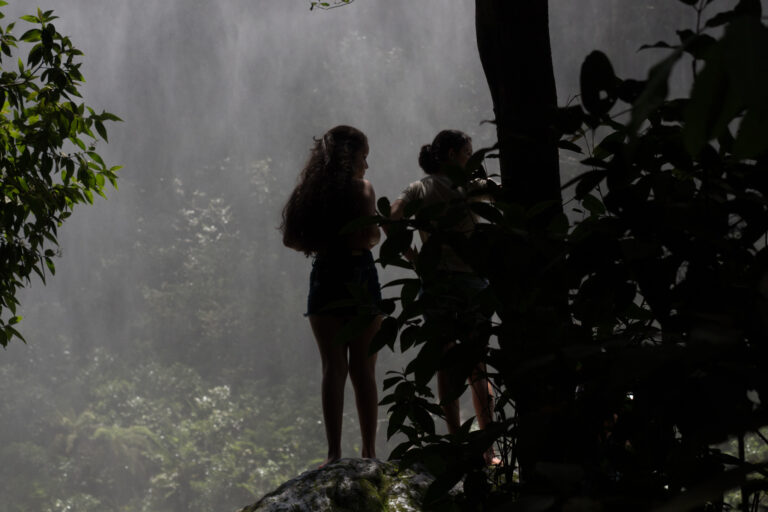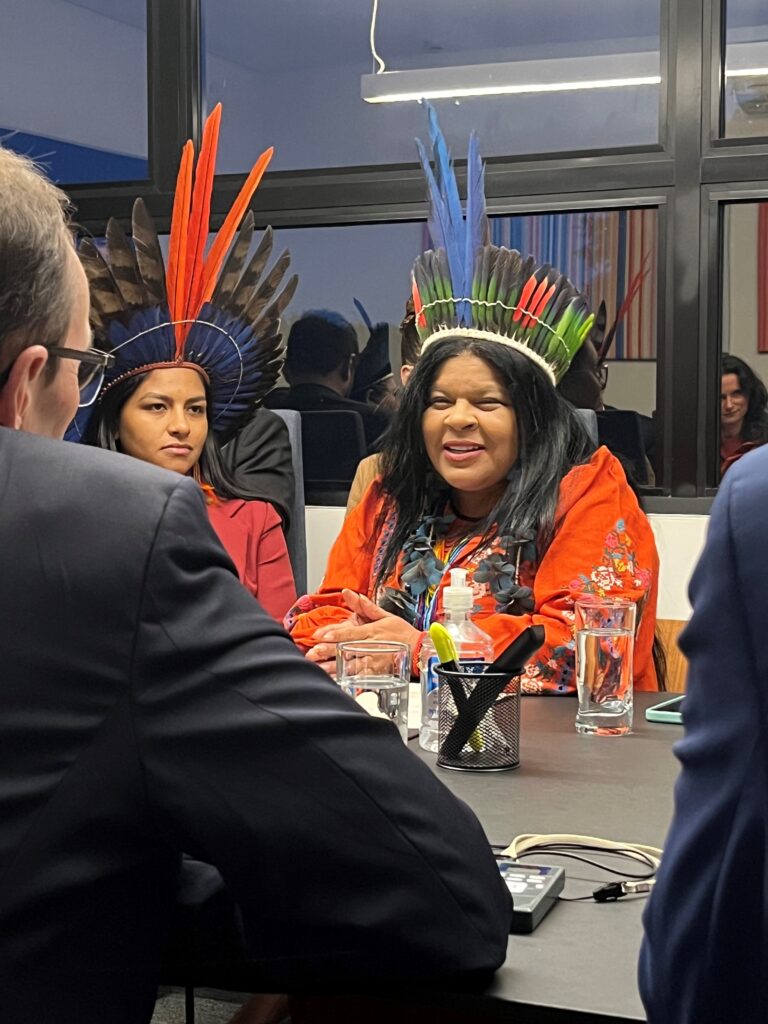
As we enter 2024, the world is experiencing an unprecedented momentum of support to Indigenous Peoples and a growing global understanding of their role as forest guardians.
Making up some 5 percent of the global population, indigenous peoples manage at least a quarter of the carbon stored in tropical forests, and 80% of the biodiversity worldwide. This is recognized in the scientific panels of both the climate and biodiversity conventions.
Yet, Indigenous Peoples are often inadequately represented in political decision-making arenas, many still lacking the authority to manage their own lands. This forms the background for the UNFCCC CoP26 Glasgow Forest and Tenure pledge, where bilateral and philantropic donors pledged to spend USD 1,7 billion to secure indigenous peoples’ land rights and forest guardianship by 2025.
2023 marked 40 years of Norwegian support to Indigenous Peoples in Brazil. Building upon the legacy from the Norwegian Indigenous Peoples Programme (NIPP), the rights of Indigenous Peoples remain at core of NICFI’s strategies.

The Norwegian Indigenous Peoples Programme (NIPP)
Support for Indigenous Peoples has been an important part of Norwegian cooperation in Brazil for four decades. Through a long-term commitment, Norway has contributed to the consolidation and effective use of a legal framework concerning the rights of indigenous peoples in Brazil, with an emphasis on territorial rights. The primary instrument for implementing this cooperation has been the Norwegian Indigenous Peoples Programme (NIPP).
The programme centers around building capacity within indigenous representative organizations and securing Indigenous Peoples the rights and means to protect their lands. It also provides support for the setting-up of financing mechanisms managed by indigenous associations to promote management of their territories – such as Fundo Podáali and Fundo Rio Negro – with the latter receiving seed funding in addition. The gender perspective is also a strong component within the Programme, NIPP always looking to strengthen female participation within the indigenous associations and communities.
With roughly USD 9 million a year in disbursements the past 3 years, NIPP gives a sizeable contribution to increased governance of Indigenous Peoples over their lands as a way to protect forests, biodiversity and combat climate change. Since 2017, the program has been fully integrated under the NICFI umbrella.
Long-term partnerships
The collaboration between Norway and the indigenous movement in Brazil was celebrated several times during 2023.
 Photo: Danyelle Simões/The Norwegian Embassy in Brazil
Photo: Danyelle Simões/The Norwegian Embassy in Brazil
A strong indigenous movement
When the programme was launched in 1983, Brazil was still under military dictatorship. As the re-democratization process got underway, representative indigenous organisations and NGOs played an important role in securing that Indigenous Peoples’ rights were included in the new constitution, adopted in 1988. The indigenous movement continued to work with subsequent governments to implement those rights, in particular related to lands of traditional occupation.
Strong civil society organizations represent a key pillar of a functioning democracy, and we see a diverse and vibrant indigenous movement in Brazil today. A movement from which many leaders are now taking up positions in the executive and legislative, participating in the shaping of public policy in an unprecedented fashion. The creation of a Ministry for Indigenous Peoples (MIP) and the appointment of Sonia Guajajara is an important step in advancing IPs formal representation and influence in decision-making processes. Brazil’s indigenous policy has played a significant role in preserving forests, particularly in the Amazon region.
The Amazon Fund
NICFI has contributed USD 1,2 billion to the Amazon Fund since 2008 in recognition of Brazil’s result in reducing deforestation and in support of Brazil’s efforts to combat deforestation, promoted sustainable development, and safeguarded the indigenous territories within the Amazon. The Amazon Fund has contributed to the implementation of Brazil’s leading policy for the management of indigenous territories, PNGATI. PNGATI was launched in 2012 as a result of discussions and collaboration between the federal government and indigenous representatives, with the support of relevant civil society organizations.
Since its creation 15 years ago, the Amazon Fund has supported indigenous communities in different ways. To date 100 indigenous lands and over 60.000 indigenous persons have benefited directly from the support and indigenous communities continues to be a priority for the Fund.
 Photo: NICFI
Photo: NICFI
Indigenous Peoples at the core of NICFI
During its 15-year history NICFI has expanded support to Indigenous Peoples and local communities in tropical forest countries. Securing the land rights and giving voice to Indigenous Peoples and forest dependent communities in international climate and biodiversity talks have been key priorities since NICFI was launched in 2008.
The support involves direct funding to representative indigenous organizations and supportive NGOs and through funding mechanisms such as the Tenure Facility. Most of NICFI’s bilateral or multilateral partnerships also include substantial components to support capacity building for securing land rights. Lessons learnt through these lines of support inform our work on nature and climate, as well as discussions about channels for funding IP and LCs going forward.
Increased international funding is another key priority. As such, the Glasgow forest and tenure pledge and associated partnerships represent continuity for NICFI, and a welcome broadening and formalization of the funding base to include more bilateral donors and philanthropies under a common approach. The donors behind the pledge also committed to monitor and report on spending and cooperation with indigenous peoples and local communities’ organizations in this effort. Also in extension of the pledges made at CoP26, a number of countries committed to pursue action at political level through the high ambition coalition Forest and Climate Leaders Partnership. Norway co-leads the Action Area for Supporting Indigenous Peoples and Local Communities under this partnership, together with Peru.
Read more about NICFI’s support to Indigenous people here.
Did you know?
- 11.6 percent of Brazilian territory is declared IP land.
- 991.498 km2 are recognized as Indigenous territory in Brazil. That equals an area bigger than France and the UK together.
- According to the Brazil 2022 Census, 1.7 million individuals declared themselves as indigenous. These individuals are divided into hundreds of different peoples and spoken languages.
- According to the UN, there are over 476 million indigenous people living in 90 countries across the world, accounting for 6.2 per cent of the global population. Of those, there are more than 5,000 distinct groups.
- About 36% of remaining intact forests are on Indigenous Peoples’ lands. Indigenous Peoples and local communities safeguard 80% of the world’s remaining biodiversity and forests on their land are better maintained, with a higher preserved biodiversity than those on non-Indigenous lands.
